2015 Conference Presentations
Speaker presentations are posted as they are received.
 Annotating and Mapping Ephemeral Films of National Socialism in Austria
Annotating and Mapping Ephemeral Films of National Socialism in Austria
Lindsay Zarwell, US Holocaust Memorial Museum
Take a glimpse into everyday life in Austria before and during the Holocaust, and see what amateur filmmakers who were there saw. The “Ephemeral Films Project: National Socialism in Austria,” completed in fall 2015, has preserved, analyzed, and made accessible approximately 50 films related to the history of the Nazi period and the Holocaust. Learn about the features of this open-source, innovative web application and how to apply this new technology to your archival projects. The online film player pulls from a high-resolution film scan, which preserves both the structure and content of the original films, and combines a frame-by-frame level of analysis with dynamic annotations that synchronously change as the historic film plays. One can see a modern-day image of a building or the plotting of locations on an interactive map. This project provides an opportunity to reexamine the relationships between film, history, historiography, and technology.
_______________________________
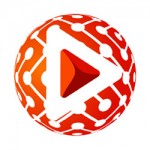 Cabrinety-NIST Project: Large-Scale Digital Preservation of a Legacy Software Collection
Cabrinety-NIST Project: Large-Scale Digital Preservation of a Legacy Software Collection
Charlotte C. Thai, Cabrinety Project Archivist, former Digital Asset Specialist at Blizzard Entertainment, and Executive Editor of Tips & Tricks Magazine
The Cabrinety-NIST Project is a cross-country collaborative effort between SUL (Stanford University Libraries) and NIST (National Institute of Standards and Technology) to fully migrate software from original media in the Stephen M. Cabrinety Collection in the History of Microcomputing, ca. 1975-1995 into the Stanford Digital Repository for long-term preservation. The Cabrinety collection is one of the largest archival collections of historical microcomputing software anywhere in the world, containing 15,000+ titles in formats including computer cassettes, video game cartridges, floppy disks (3.5 inch, 5.25 inch, and 8 inch), CD-ROMs, and DVD-ROMs. Preservation of this collection involves creating high-resolution photographic scans of the physical materials (boxes on all six sides, software media, and manuals), as well as forensic disk images (bit-by-bit copies of the media) and checksums. This presentation looks in-depth at some of the logistical, technological, and intellectual challenges inherent to a digital preservation project of this scale.
_______________________________
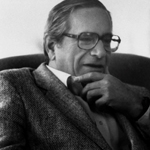 Archival Education in Transition: Taking Stock
Archival Education in Transition: Taking Stock
Snowden Becker, UCLA
Eef Masson, University of Amsterdam
Jeffrey Stoiber, George Eastman House/L. Jeffrey Selznick School of Film Preservation
Howard Besser, NYU MIAP
Eric Rosenzweig, FAMU
Madeline Bates, Creative Skillset
With new audiovisual archiving and preservation programs launching in London, Prague, Frankfurt and Potsdam, and significant changes taking place in some of the longest-running degree programs in this field, it’s time to take stock of the state of professional education in audiovisual preservation and archiving. Representatives from new and established programs will provide comprehensive updates on their successes (and frustrations) to date, as well as their current status, philosophical approaches, and future plans.
_______________________________
 Advocacy: Personal Advocacy – The Power of One
Advocacy: Personal Advocacy – The Power of One
Benedict Olgado, University of the Philippines Diliman
Ray Edmondson, Archive Associates Pty Ltd
Débora Butruce, Brazilian Association of Audiovisual Preservation (ABPA)
Chalida Uabumrungjit, Thai Film Archive
This session is focused on what the individual can and/or should do in his/her own situation to bring about change within an archive or institution. The single voice and positive intent of one individual can be extremely effective in bringing about reform and spurring interest in cultural heritage.
- Presentation: Ray Edmondson, Archive Associates Pty Ltd
- Presentation: Debora Butruce, Brazilian Association of Audiovisual Preservation (ABPA)
_______________________________
 Advocacy: International Reference Points
Advocacy: International Reference Points
Caroline Yeager, George Eastman House; co-chair AMIA Advocacy Committee
Hila Abraham, Jerusalem Cinémathèque – Israel Film Archive
Christophe Dupin, International Federation of Film Archives (FIAF)
Joie Springer, Former Senior Program Specialist UNESCO
Authoritative international reference points and mechanisms which film archivists can employ in confidently advocating for their work include UNESCO’s Memory of the World Register and the World Day for Audiovisual Heritage; the codes of ethics adopted by professional associations; and the literature of advocacy, which can be both an inspiration and a guide. Getting each of these reference points in place required its own advocacy exercise: international organizations don’t spontaneously change their status quo. Cases have to be made, people have to be persuaded and it can take years. But once in place, they carry the weight and authority of such organizations. Do they actually work? Does anything change because they are there?
_______________________________
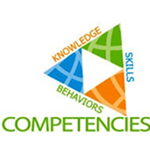 Competency-Based Frameworks for Moving Image Archiving Education
Competency-Based Frameworks for Moving Image Archiving Education
Kelle Anzalone, Mission Hills High School
Karen Gracy, Kent State University
Dino Everett, Hugh M. Hefner Moving Image Archive
Edward Benoit, Louisiana State University
This session will consider the potential for competency-based pedagogical frameworks to shape moving image archiving education. Presenter Karen Gracy will offer an orientation to the core competency model and how it might be applied in the moving image archiving domain for graduate-level and continuing education programs. USC Moving Image Archivist Dino Everett will also be addressing how competency-based educations can and will better suit employers looking to hire students fresh out of master programs. Ed Benoit will present preliminary findings of a competency focused analysis of recent audiovisual archiving job postings in traditional archives.
_______________________________
 Item vs. Collection Level Censuses in University Libraries
Item vs. Collection Level Censuses in University Libraries
Tre Berney, Cornell University
Josh Harris, University of Illinois, Urbana-Champaign
Danielle Mericle, Cornell University
Many institutions are planning campus-wide assessments of media holdings as a way to begin systematic digitization of content for preservation and access, or to make arguments for broader institutional support. Josh Harris, Media Preservation Coordinator at University of Illinois at Urbana-Champaign, Danielle Mericle, Director, Digital Media Group, Cornell University Library, and Tre Berney, Director of Digitization and Conservation Services, Cornell University Library will compare and contrast two methods of conducting such an assessment, one which collects item-level data and the other which collects collection-level data. Both parties will discuss the decisions that informed their respective strategies, as well as the pros and cons of their approach. The overarching goal is to provide insight into what each organization did to identify need and scale of effort, make arguments for financial support, and how they went about shaping the necessary narrative for administrators and key stakeholders.
_______________________________
 The Environmental Impact of Digital Preservation
The Environmental Impact of Digital Preservation
Linda Tadic, Digital Bedrock
Archives with audiovisual collections are racing the clock to digitize video and audio tape before total media failure and obsolescence. The resulting digital files are stored on spinning disk (servers, hard drives) and/or digital tape, both of which will fail or become obsolete in time and must be replaced. As collections are digitized, millions of audio and video recordings will be discarded globally in the coming years. Much magnetic media and e-waste go to landfills and are incinerated, creating a toxic environment for humans. According to the 2013 Blacksmith Institute report, an e-waste processing center in Ghana was the most toxic site on the planet — ahead of Chernobyl. Media disposal is not the only area where audiovisual and digital preservation impacts the environment. The process of keeping digital files alive over time requires power and natural resources. How will our media and digital archives contribute to damaging the planet, and what can be done to mitigate our actions? Digital collections could require a stricter appraisal and selection policy than legacy collections to decrease the amount of digital content that is saved. This paper will outline possible options to decrease the collective “carbon footprint” while sustaining digital content entrusted to archives.
_______________________________
 The Academy Color Encoding System: A Standard for Long-term Archiving of Digital Motion Picture Materials
The Academy Color Encoding System: A Standard for Long-term Archiving of Digital Motion Picture Materials
Andy Maltz, Science and Technology Council, Academy of Motion Picture Arts and Science
The Academy Color Encoding System, known as ACES, was released to the industry in December, 2014 as a production-ready suite of technical standards, best practices and support tools. Developed and tested by equipment manufacturers, facilities and filmmakers over the last 11 years, ACES is intended to be the standardized digital production infrastructure that enables the industry to take full advantage of coming high dynamic range and wide color gamut capture, processing and display technologies. ACES includes file format standards suitable for long-term archiving, an essential component of a complete digital archiving strategy. This presentation explains how productions using ACES will generate archive-ready files and the file formats and related standards that support long-term archiving of digital motion picture materials.
_______________________________
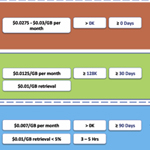 DAS Keynote: John Downey, NextGen Storage
DAS Keynote: John Downey, NextGen Storage
John Downey is founder and CEO of NextGen Storage, a company dedicated to accelerating the breadth and market adoption of next-generation, cloud-integrated storage technologies and services. In his role, Downey delivers thought leadership around data storage and data management technologies and their intersection with cloud computing. Prior to launching NextGen Storage, he managed enterprise storage strategies for Amazon Web Services.
_______________________________
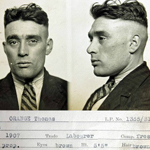 Law Enforcement & the Challenges of Digital Asset Management
Law Enforcement & the Challenges of Digital Asset Management
David J. Roberts, Senior Program Manager of the Technology Center at the International Association of Chiefs of Police (IACP)
The International Association of the Chiefs of Police (IACP) is the organization that serves as the professional voice of law enforcement. As over 18,000 agencies deal with the onslaught of technology and the massive volume of digital media from dashcams to lapel cameras, the IACP helps police departments around the world manage explosion of changes from advancing technology and public outcry for transparency. This keynote case study will explore the processes being developed to manage the onslaught of digital media.
_______________________________
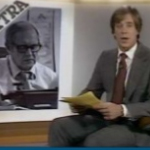 EXTRA: Examining AV Enterprise at a Regional Academic Archive
EXTRA: Examining AV Enterprise at a Regional Academic Archive
Molly Rose Steed, University of Utah
Jessica Breiman, University of Utah
Tawnya Keller, University of Utah
In 1977, EXTRA’s dynamic mesh of critical exposés, in-depth interviews, short subject documentaries and experimental film represented a turning point for visual media in Utah and launched the careers of artists and journalists, who took advantage of new possibilities in production and pre-recorded programming. In 2014, a grant to digitize this local television newsmagazine became a turning point for the University of Utah’s AV Archive – a small division of the J. Willard Marriott Library’s Special Collections department – helping to redefine its operations and its role within the library. In this case study, the Marriott Library’s AV and Digital Preservation archivists will discuss not only the content and progress of the EXTRA project but also the significant institutional takeaways for regional archives and academic libraries just beginning to tackle their AV collections that resulted from the process as a whole.
_______________________________
 Community Archiving Workshop
Community Archiving Workshop
Moriah Ulinskas, Independent Archivist
Yvonne Ng, Witness
Taylor McBride, Smithsonian Institution
Sandra Yates, Texas Medical Center Library
Amy Sloper, Wisconsin Center for Film & Theater Research
Rachel E. Beattie, University of Toronto
Community Archiving provides moving image archivists the opportunity to serve the community of Portland and work with local volunteers to help an organization gain intellectual and physical control over an endangered moving image collection. The workshop provides a space for conference attendees to partner with local volunteers to conduct basic processing, cataloging and inspection of a moving image collection and, by doing so, will learn how to identify risk factors and make preservation recommendations for moving image collections. Attendees will gain experience in working with and training non-archivists to care for their collections. In the process, they will engage in hands-on processing, inspecting, and cataloging audiovisual media. Most importantly, they will build relationships and connections with the Portland community and learn about local history.
_______________________________
 Through Chaos Comes Clarity: Building, Implementing & Promoting Taxonomy for Media Collections
Through Chaos Comes Clarity: Building, Implementing & Promoting Taxonomy for Media Collections
Kathryn Gronsbell, Carnegie Hall
Sarah Knight, NPR
Well-controlled descriptive metadata enables audiovisual collections to be accessible; organizations should be equipped with practical knowledge about taxonomy development and implementation. This session provides basic information about common practices that may help organizations determine the benefits of pursuing or resurrecting various types of vocabularies. The session will include a brief primer on taxonomy basics, sharing lessons learned from Carnegie Hall’s recent digital asset management efforts which included locally-developed vocabulary structures. In addition, the session will explore NPR’s strategic approach to taxonomy, with a focus on the organization’s unique business cases and audiences. The speakers aim to ground the introductory conversation in real-world terms and open the floor for exploratory conversation about taxonomy and its relationship to media collections.
_______________________________
 Managing and Marketing Your Archive for Cinema Exhibition
Managing and Marketing Your Archive for Cinema Exhibition
Barbara Twist, Art House Convergence
Barak Epstein, Texas Theatre
This session will address the limited access to archival material by non-academic and non-industry film consumers by proposing an increase in on-screen exhibition via several ways: increasing cinema exhibitor access to archives, packaging archival content into series and shorts programs, and marketing your archive to cinema exhibitors directly or via a third-party. Programming repertory and archival content are important cultural missions of many independent cinemas, yet they also represent a significant revenue stream. The audiences that frequent these theaters represent a more highly-educated and more committed moviegoer who is traditionally interested in archival and repertory screenings. The session will present several case studies of recently successful packaged archival and repertory series, including Martin Scorsese Presents: Masterpieces of Polish Cinema. The speakers represent exhibitors who regularly program repertory and archival content and the Art House Convergence, who represents hundreds of independent film exhibitors in the United States.
_______________________________
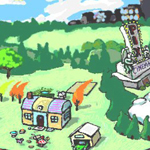 Party Like it’s 1999: Emulated Access to Complex Media Collections
Party Like it’s 1999: Emulated Access to Complex Media Collections
Julia Kim, Library of Congress
Alison Rhonemus, New York Public Library
Donald Mennerich, NYU
Morgan McKeehan, Rhizome Art Base
Dianne Dietrich, Cornell University
Born-Digital material is pervasive, but where and how is it accessible, especially in the case of complex born-digital? In this session, we will highlight4 cutting edge use cases of complex born-digital emulations that have been made accessible to researcher. Panelists will highlight the work at Cornell University Library, New York Public Library, New York University, and Rhizome Art Base. This panel will offer multiple institutions’ perspective on using emulation, including technical challenges, documentation, and opportunities for future work and collaboration. Audience members are highly encouraged to bring obsolete CD-ROMs for a Rhizome-led workshop on Emulation as a Service. Audience members will come away with a good grounding of what is possible in emulation across different types of institutions and support structures.
_______________________________
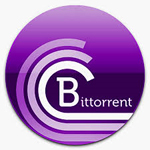 Seeding and Leeching: Collaborative Preservation using BitTorrent
Seeding and Leeching: Collaborative Preservation using BitTorrent
Justin Mckinney, Independent Consultant
Mark Simon Haydn, Collections Manager
Ashley Blewer, New York Public Library
Using private tracker communities circulating film material as a model, this panel explores the potential for BitTorrent to work as a preservation tool. Studying the development of film sharing sites, and exploring the standards imposed on content and users, this discussion will evaluate the suitability of BitTorrent for creating an accessible, sustainable, stable network to aid the preservation of significant digital and digitized materials. Presenters will discuss the benefits and limitations of the protocol, and the work that can be done in the field to make decentralized hosting a feasible option for archives.
_______________________________
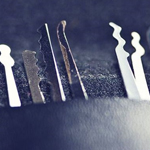 Education Committee Open Session: Entering the A/V Archiving Profession – Tips, Tricks and Advice
Education Committee Open Session: Entering the A/V Archiving Profession – Tips, Tricks and Advice
Tressa Graves
Kelle Anzalone, Mission Hills High School
Bryce Roe, Simmons College
Kathryn Gronsbell, Carnegie Hall
Michele Winn
Ashley Blewer, New York Public Library
The AMIA Education Committee, in collaboration with a cohort of AMIA student and professional members, will host this lightning talk/Q+A session to address issues and questions relevant to AV archivists in the first stages of their careers. With so few accessible academic opportunities focused on AV archiving, many students and early professionals must strategically gain these skills and experiences outside of the classroom. The panel offers an opportunity to discuss the need for curriculum development, while offering professional development strategies for early professionals, as well as tips for inreach and quality mentorship from experienced professionals. Speakers will cover topics addressed to both early and experienced professionals, including networking advice and job seeking and resume tips.
_______________________________
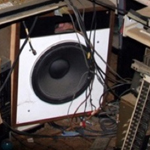 Validate Your Digital Assets: PREFORMA, MediaConch and File Compliance
Validate Your Digital Assets: PREFORMA, MediaConch and File Compliance
David Rice, CUNY
Ashley Blewer, MediaArea SARL
Erwin Verbruggen, Netherlands Institute for Sound and Vision
The EU-funded PREFORMA project aims to develop robust file validation environments through collaborations with archives, archivists, software developers, and other cultural heritage stakeholders. The speakers will discuss file conformance checking and how the PREFORMA project envisions giving archives more control over their file validation processes. The panel includes a demonstration of MediaConch, an open-source file conformance checker from the developers of MediaInfo.
_______________________________
 AO&U: Tools and Technologies for Enhancing Access to Audiovisual
AO&U: Tools and Technologies for Enhancing Access to Audiovisual
Jack Brighton, Illinois Public Media
Lai Tee Phang, National Archives of Singapore
Anne Wootton, Pop Up Archive
Mark Williams, The Media Ecology Project, Dartmouth College
Allison Schein, Studs Terkel Archive
Edwin Verbruggen, Netherlands Institute for Sound and Vision
A/V collections are increasingly digital; in theory, that also means increasingly accessible. However, on the web, media has a distinct disadvantage — because it’s not text-based, it’s hard to search, hard to skim, and hard to share. More than for any other kind of digital collection, effective use of technology is crucial in helping users to discover and engage with digital audiovisual collections. Digital tools for audiovisual materials can allow collections to develop a meaningful web presence, improve searchability, create new distribution channels, and develop access points for users. This session will explore some of the technology currently being used and developed by audiovisual archives, libraries, and scholarly communities, such as speech-to-text software, data harmonization, scholarly research metadata, and online remix programs, and how these tools can be used to improve access to a/v.
- Presentation: Mark Williams, Dartmouth College
- Presentation: Lai Tee Phang, National Archives of Singapore
- Presentation: Edwin Verbruggen, Netherlands Institute for Sound & Vision
- Presentation: Anne Wootton, Pop Up Archive
- Crowdsourced notes, livetweets and presentations for Access, Outreach & Use Stream
_______________________________
 AO&U: Understanding What Users Need to Understand Us (and our data)
AO&U: Understanding What Users Need to Understand Us (and our data)
Jean-Pierre Evain, EBU
Amy Ciesielski, University of South Carolina
Sadie Roosa, WGBH
Ed Benoit, Louisiana State University
Laura Treat and Julie Judkins, University of North Texas
How do different types of users access media archives? What are the searching methods of different types of users? How do archives take these needs into account in providing high quality and necessary descriptive metadata about moving image collections? Some archives have sought engagement with users to crowdsource description of archival holdings; what are the key differences in crowdsourcing requirements for moving image collections? These questions have largely been answered in general archival literature, but until now they have not been addressed in the area of audiovisual collections.
- Presentation: Amy Ciesielski, University of South Carolina
- Presentation: Sadie Roosa, WGBH
- Presentation: Laura Treat and Julie Judkins, University of North Texas
- Presentation: Ed Benoit, Louisiana State University
- Crowdsourced notes, livetweets and presentations for Access, Outreach & Use Stream
_______________________________
 AO&U: Navigating Copyright to Provide Access and Use
AO&U: Navigating Copyright to Provide Access and Use
Andy Sellars, Berkman Center for Internet & Society, Harvard Law
Casey Davis, WGBH
Janel Quirante, University of Hawaii – West Oahu
Nadia Ghasedi, Washington University
In order to maximize the potential of archival access in the digital realm, archivists need to understand the copyright issues, risks and exemptions, and the means of navigating those issues within their institutions. In this session, Andy Sellars will report on copyright legislation in the pipeline which will potentially affect access by libraries and archives. Casey Davis will discuss lessons learned through navigating copyright issues pertaining to digitized public media content in the American Archive of Public Broadcasting. Janel Quirante will describe the experience and workflows associated with copyrighted collection material at the University of Hawaii, including donor relations and University of Hawaii’s levels of access based on a fair use analysis. Finally, Nadia Ghasedi will share some of Washington University’s copyright dilemmas and make the case for a copyright best practices guidelines for moving image collections.
- Presentation: Andy Sellars, Harvard Law School
- Presentation: Janel Quirante, University of Hawaii
- Crowdsourced notes, livetweets and presentations for Access, Outreach & Use Stream
_______________________________
 AO&U: Moving Beyond Access: Unlocking the Potential of Moving Image Archival Collections
AO&U: Moving Beyond Access: Unlocking the Potential of Moving Image Archival Collections
Johan Oomen, Netherlands Institute for Sound and Vision
Erica Titkemeyer, Southern Folklife Collection, UNC Chapel Hill
Lily Troia, Simmons College
John Campopiano, Frontline
Jennifer Steele, YOUmedia, Chicago Public Libraries
Once the public has access to our digital moving image collections, what can they do with them? This presentation will focus on ways that archives can inspire users such as scholars, educators, students, artists, journalists, etc., to use their collections in innovative and nontraditional ways. How can archivists encourage experiential and inquiry-based use of moving image collections for research and learning? The presentations will cover methodologies, experiments, and report on meetings with scholars on ways of using moving image collections to the full potential of their value. Finally, this session will discuss some of the implications for archives of these less traditional uses of the materials and how this might affect moving image archives in the long term.
- Presentation: Erica Titkemeyer, UNC Chapel Hill
- Presentation: Lily Troia, Simmons College
- Crowdsourced notes, livetweets and presentations for Access, Outreach & Use Stream
_______________________________
 AO&U: Methodologies for Assessment and Evaluation of Access to Moving Image Collections
AO&U: Methodologies for Assessment and Evaluation of Access to Moving Image Collections
Dave Rice, CUNY
Karen Cariani, WGBH
Deborah Steinmetz, Steven Spielberg Jewish Film Archive
Eric Saltz, NC A&T State University
Understanding the needs and expectations of users is critical to providing access to moving image archival collections. In developing preservation and access systems, archives can engage with users in the development and design phase, assessing the needs to determine functional requirements. After an archive launches new initiatives to provide access to its collections, evaluation is necessary to monitor program success and to ensure that user needs are being met. During this session, panelists will discuss methodologies of user-centered design and evaluation, including both qualitative and quantitative forms of research.
- Presentation: Deborah Steinmetz, Steven Spielberg Jewish Film Archives
- Presentation: Karen Cariani, WGBH
- Crowdsourced notes, livetweets and presentations for Access, Outreach & Use Stream
_______________________________
 AO&U: Apples and Oranges: Providing Meaningful Access to Mixed Media Collections
AO&U: Apples and Oranges: Providing Meaningful Access to Mixed Media Collections
Elizabeth Walters, Harvard University
Alan Gevinson, Library of Congress
Mary Miller, Peabody Awards Collection, University of Georgia
Stephanie Sapienza, Maryland Institute for Technology in the Humanities, University of Maryland
Media doesn’t exist in a vacuum. Much of the audiovisual material housed in archival collections is linked to a web of related textual and material documentation — transcripts, press scripts, correspondence, production notes, etc. — which provides important context and add value for researchers and the public. However, in many cases, the media and related paper/textual collections are accessioned and processed using very different and separate techniques, guidelines, and description schemas. In some cases, the materials are separated geographically as well as intellectually, making it even more difficult for users to understand and make use of the full potential of the material. This session will discuss the specific challenges and benefits of providing meaningful access to mixed-media collections, with a focus on methods for using text and documents to contextualize audiovisual materials.
- Presentation: Stephanie Sapienza, University of Maryland
- Crowdsourced notes, livetweets and presentations for Access, Outreach & Use Stream
_______________________________
 AO&U Pop-up: Virtual Engagement: Archival Participation in Social Media Platforms
AO&U Pop-up: Virtual Engagement: Archival Participation in Social Media Platforms
Ariel Schudson
AMIA’s Access Committee conducted a survey of the AMIA community on the use of social media. More than half of respondents use social media, and 59% of institutions have an official social media team or individual. Yet, most do not participated in #askanarchivist or #askacurator day.
- Presentation: Ariel Schudson
- Crowdsourced notes, livetweets and presentations for Access, Outreach & Use Stream
_______________________________
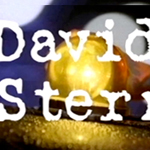 Poster: Commercial Content & Alternative America: Exploring the David Stern Archive
Poster: Commercial Content & Alternative America: Exploring the David Stern Archive
Ariel Schudson, Independent Archivist
David Stern was an award-winning cinematographer/director in the film and television industry for over 30 years. Having worked with cult filmmakers like Jack Hill and Bob Cresse, David then began his advertising career with edgy firms exploring hippie corporate landscapes. Creating a variety of multi-format media ranging from 1960s “music videos” to an extensive body of star-studded TV commercials, this presentation centers on the critical nature of preserving the David Stern Archive and its place in television advertising history.
_______________________________
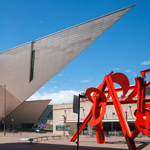 Workflows for Born Digital Materials in a Museum Collection
Workflows for Born Digital Materials in a Museum Collection
Eddy Colloton, Denver Art Museum (Conservation Intern), NYU MIAP
By identifying stakeholders and establishing buy-in from multiple departments, the Denver Art Museum (DAM) was able to implement a complex digital preservation strategy quickly and efficiently. Artworks from the museum’s design collection were disk imaged, ingested into the museum’s digital repository, and described in the museum’s collection management system. While sophisticated tools like Archivematica, BitCurator, and the Kryoflux were essential to the process, the combined efforts of the museum staff ensured a successful project. More information here.
_______________________________
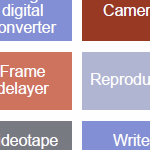 Metadata for the Digitization History of Time-based Media Art
Metadata for the Digitization History of Time-based Media Art
Peggy Griesinger, George Mason University Libraries
This poster will discuss results from a recent project at the Museum of Modern Art aimed at creating a standardized metadata profile to describe the digitization history of time-based media artworks. This poster will provide the audience with the necessary tools to apply this metadata profile, which utilizes the standards METS, PREMIS, and PBCore, to their own collections by providing example records that follow an artwork as it is transferred and digitized into multiple different formats.
_______________________________
 Collaborative Method for Overcoming the “Lack Of”: Case Study of Japan
Collaborative Method for Overcoming the “Lack Of”: Case Study of Japan
Ann Adachi-Tasch, Collaborative Cataloging Japan
A collaborative method for the cataloging and preservation of postwar Japanese experimental moving image offers
great potential for resolving several issues observed in Japan, including the lack of media archival infrastructure; limited funding and technical resources for preservation; and opening public access to important cultural material. Established in 2015, the nonprofit Collaborative Cataloging Japan (CCJ), supports archival and media preservation efforts by institutional and private collections for Japanese avant-garde moving image. www.collabjapan.org/
_______________________________
 Poster: Preserving KUHT: America’s First Public Television Station
Poster: Preserving KUHT: America’s First Public Television Station
Emily Vinson, University of Houston Special Collections
Broadcasting from the University of Houston, KUHT signed on air for the first time on May 25, 1953, with the promise of providing the growing city with educational programming. Focused on preservation and access, the University of Houston has undertaken a project to digitize an initial selection of 16mm films from the station’s early years, while also endeavoring to gain intellectual control over the large broadcast collection, spanning five decades and a variety of formats.
_______________________________
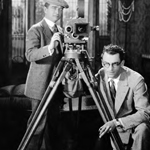 Poster: The Silent Film Project at the Library of Congress
Poster: The Silent Film Project at the Library of Congress
Amy Jo Stanfill, Library of Congress
The Silent Film Project is a new digitization project at the Library of Congress. This project grew out of the study on the Survival of American Silent Feature Films: 1912 to 1929, conducted by the Library of Congress and funded by the National Film Preservation Board. The goal of the Silent Film Project is to borrow, catalog, digitally preserve, and ensure the availability of silent (and selected sound era) films for public viewing and research.
_______________________________
 Preserving Malware in Archives, Libraries, and Museums
Preserving Malware in Archives, Libraries, and Museums
Jonathan Farbowitz, New York University, MIAP
The preservation of malicious software, known as malware, as a digital object for historical and cultural study is frequently ignored by cultural heritage institutions. I want to develop a more nuanced discussion about storing malware (and the potential consequences of removing malware from media accessioned into collections), appraising its archival value, assessing its risks, and cataloging it. The WANK worm serves as a case study in examining the challenges of preserving malware and its associated context.
_______________________________
 Poster: Assessing Archival Workflows and Micro-services at CUNY Television
Poster: Assessing Archival Workflows and Micro-services at CUNY Television
Dinah Handel, National Digital Stewardship Resident at CUNY Television
Presently, the archival workflows at CUNY Television utilize a suite of “micro-services” in order to accomplish specific tasks. This poster will provide an overview of the current CUNY-TV workflow and its present use of micro-services, show results from an assessment of the micro-services and CUNY-TV workflow, and present preliminary suggestions for improvements to the workflow, in line with best practices for preservation standards, CUNY-TV’s needs, and long term digital sustainability.
_______________________________
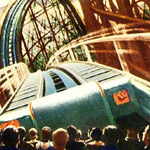 Screening: This is Cinerama Remastered
Screening: This is Cinerama Remastered
“This is Cinerama” plunges you into a startling new world of entertainment. That advertising herald is as accurate today as it was in 1952, when first night viewers found themselves suddenly riding a rollercoaster. Cinerama was an immersive cinematic process different in format and presentation from any other type of filmed entertainment. Captured in a triptych of 35mm images, with the image on each panel taller, clearer, and with 7 tracks of discrete sound, the picture was then projected on a gigantic, deeply curved screen, in a theater with surround sound speaker placement. The result was larger than life, three-dimensional and awe-inspiring. “This is Cinerama” is all at once, a demonstration film, a travelogue, an opera, an Aquacade, with soaring majesty and thrilling spectacle. Presented in Smilebox (TM) Curved Screen Simulation. Prior to the screening, the film’s digital restoration team of David Strohmaier and Randy Gitsch will present a before-and-after demonstration and discuss their work.
_______________________________
 Screening: The Thanhouser Studio and the Birth of American Cinema
Screening: The Thanhouser Studio and the Birth of American Cinema
The documentary recounts the untold story of the rise and fall of this remarkable pioneering motion picture studio during the first decade of the twentieth century. Utilizing film clips from AMIA member archives, it is an excellent case study of how the work of member organizations can be used for documenting early film history. The documentary traces the evolution of one family’s career as it transitioned from producing live theater to establishing one of the most successful independent silent motion picture studios in early cinema. Set against a backdrop of Thomas A. Edison and his Motion Picture Patents Trust companies dominating the industry, the story plays out in New York, Florida and California. It is a compelling story of fame and fortune, twisted by the vagaries of fate and ending on a bittersweet note
